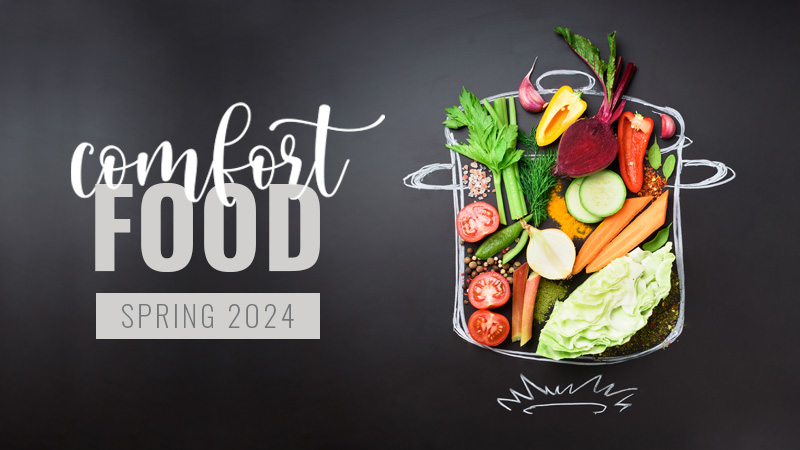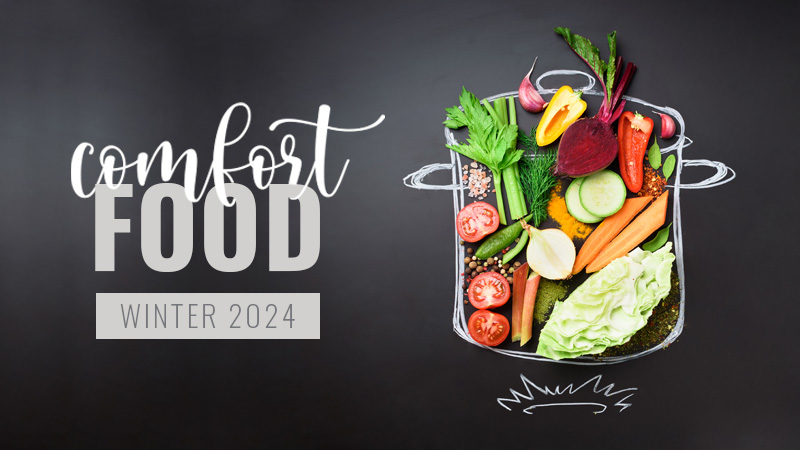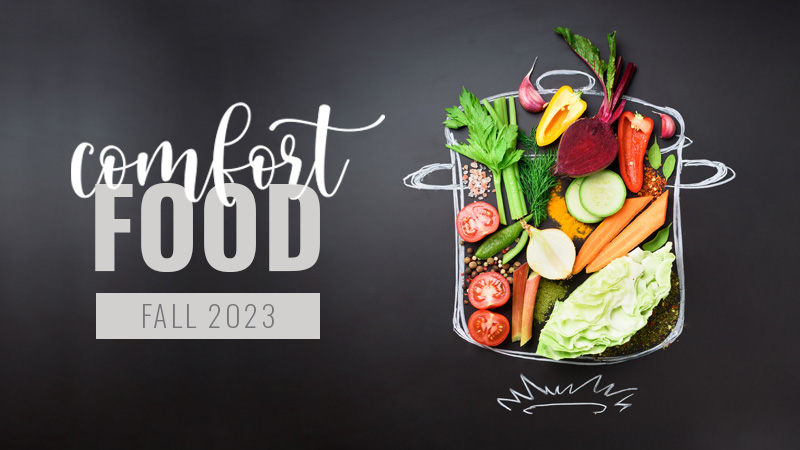Community Liaison | Blog
Impact of Economics on Hampers
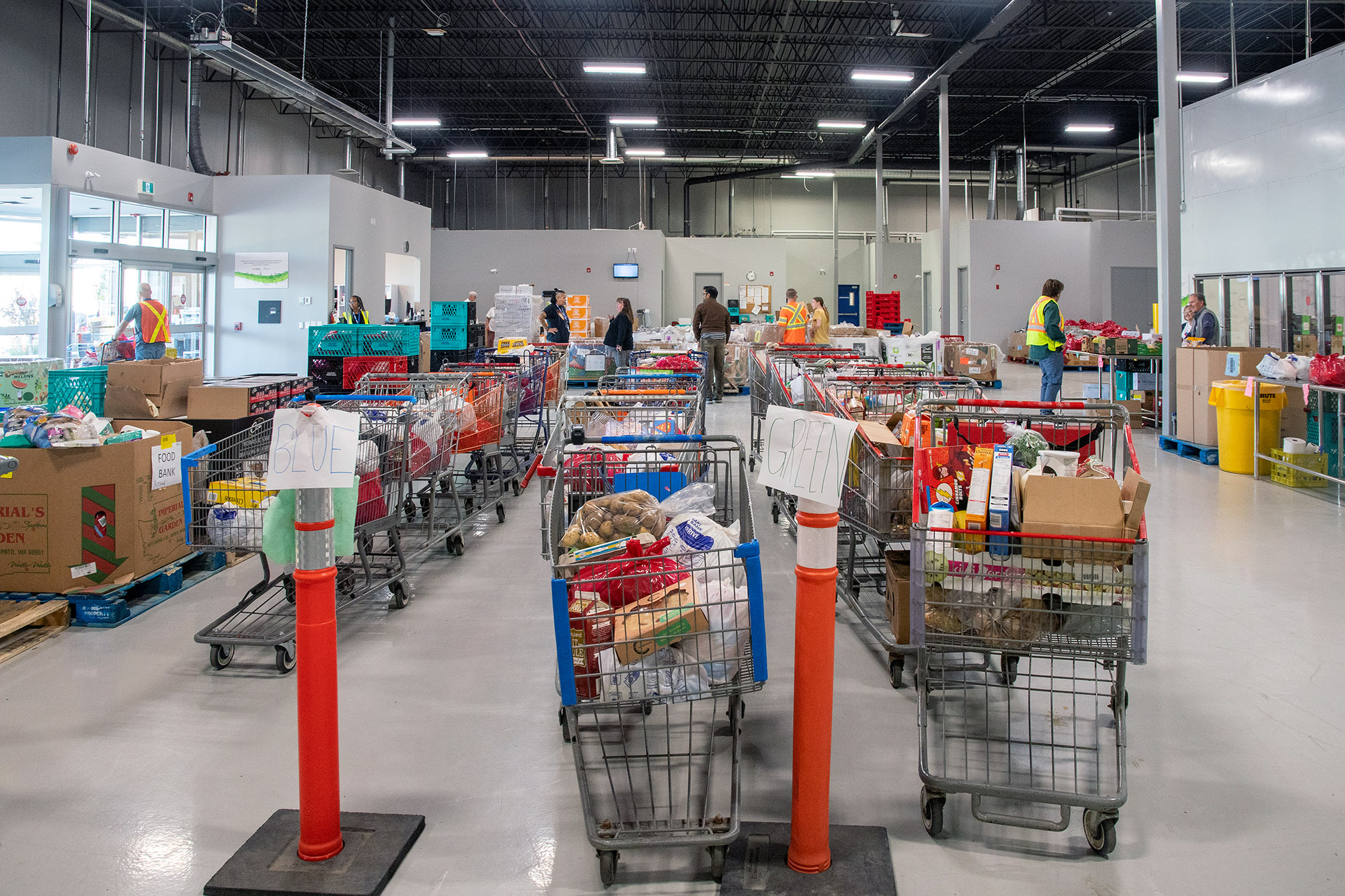
Economic Factors Influencing Calgary Food Bank Demand: An Analysis
A recent project by our Research Team explored the impact that changes in social assistance and economic factors influence Calgary Food Bank usage. The time frame for data analysis was January 2010-Decebmer 2019 given the unprecedented economic variables and change in Calgary Food Bank policy throughout the pandemic. Unemployment, average weekly wage, part time employment and crude oil price were examined, as well as factors that impact the budget of someone who uses the Calgary Food Bank: Income Support amount, AISH amount, cost of rent, and minimum wage.
Unsurprisingly, there was a positive correlation between unemployment levels and the number of hampers distributed. This means that when unemployment rates were high, so was the number of hampers being distributed.
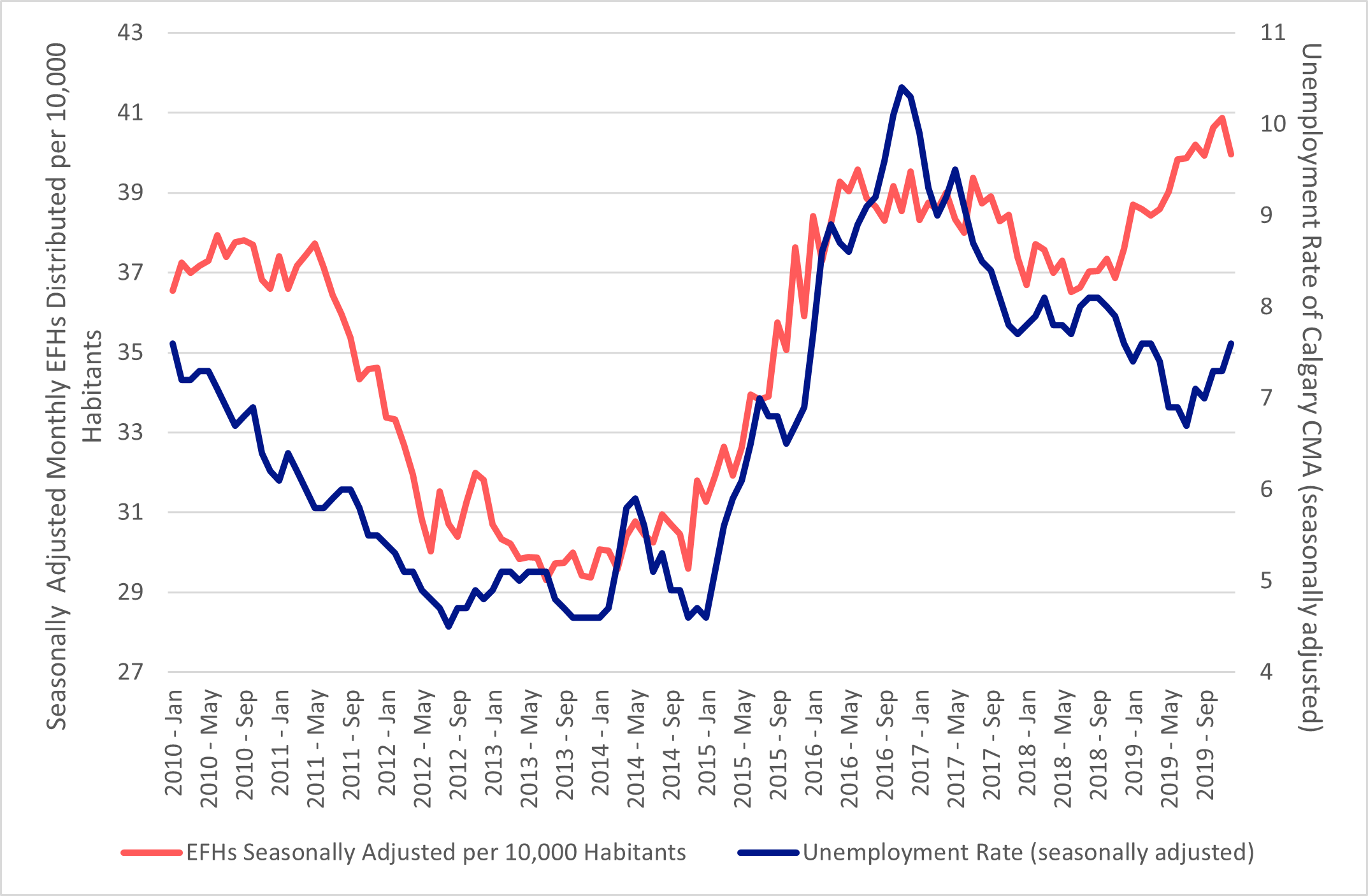
Image: Relationship between hampers distributed and unemployment rates.
Positive Correlation: When the relationship between two variables moves in the same direction: As one variable increases, so does the other and vice versa.
Negative Correlation: When the relationship between two variables moves in opposite directions: As one variable increases, the other decreases and vice versa.
Fewer hampers were distributed alongside a decrease in part-time workers. This is likely due to the relationship between part-time work and unemployment rates, where there are fewer part-time workers when unemployment is low. Conversely, if unemployment is high, we can expect more people to be picking up precarious work: part-time, casual, contract, which do not often yield a high income. Therefore, we also see more people accessing the Calgary Food Bank.
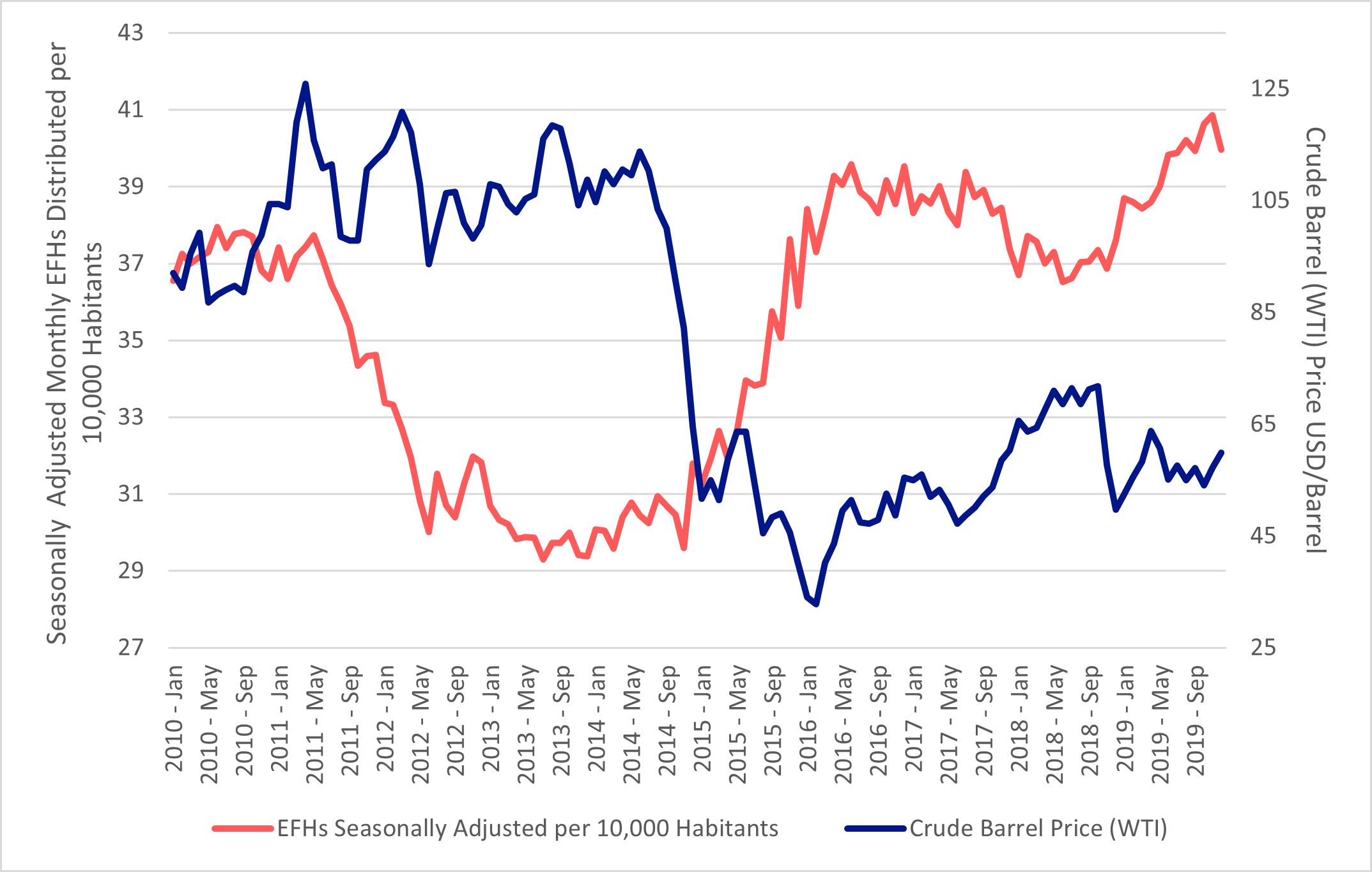
Image: Relationship between hampers distributed and the cost of crude oil.
The price of crude oil, which is a non-renewable resource used to make gasoline, kerosene, and asphalt, has a negative correlation with Calgary Food Bank hamper demand. As crude barrel prices increase, hamper demand decreases. This is likely due to how intertwined Calgary’s economy is with the oil and gas industry. Higher crude barrel prices often means that more money is coming into Alberta’s economy, money that can be invested in things like businesses, social ventures, and transportation.
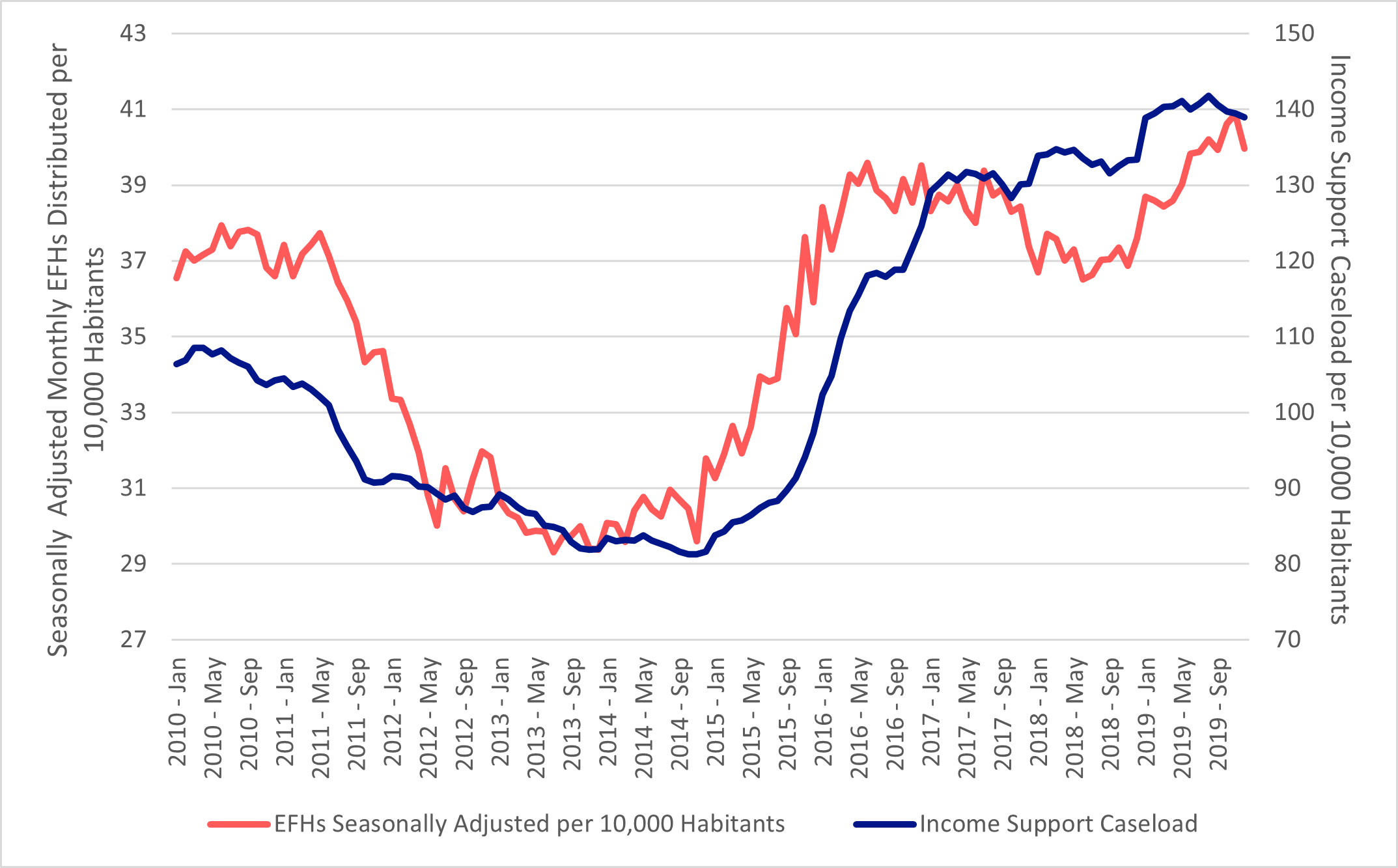
Image: Relationship between hampers distributed and amount of people receiving income support.
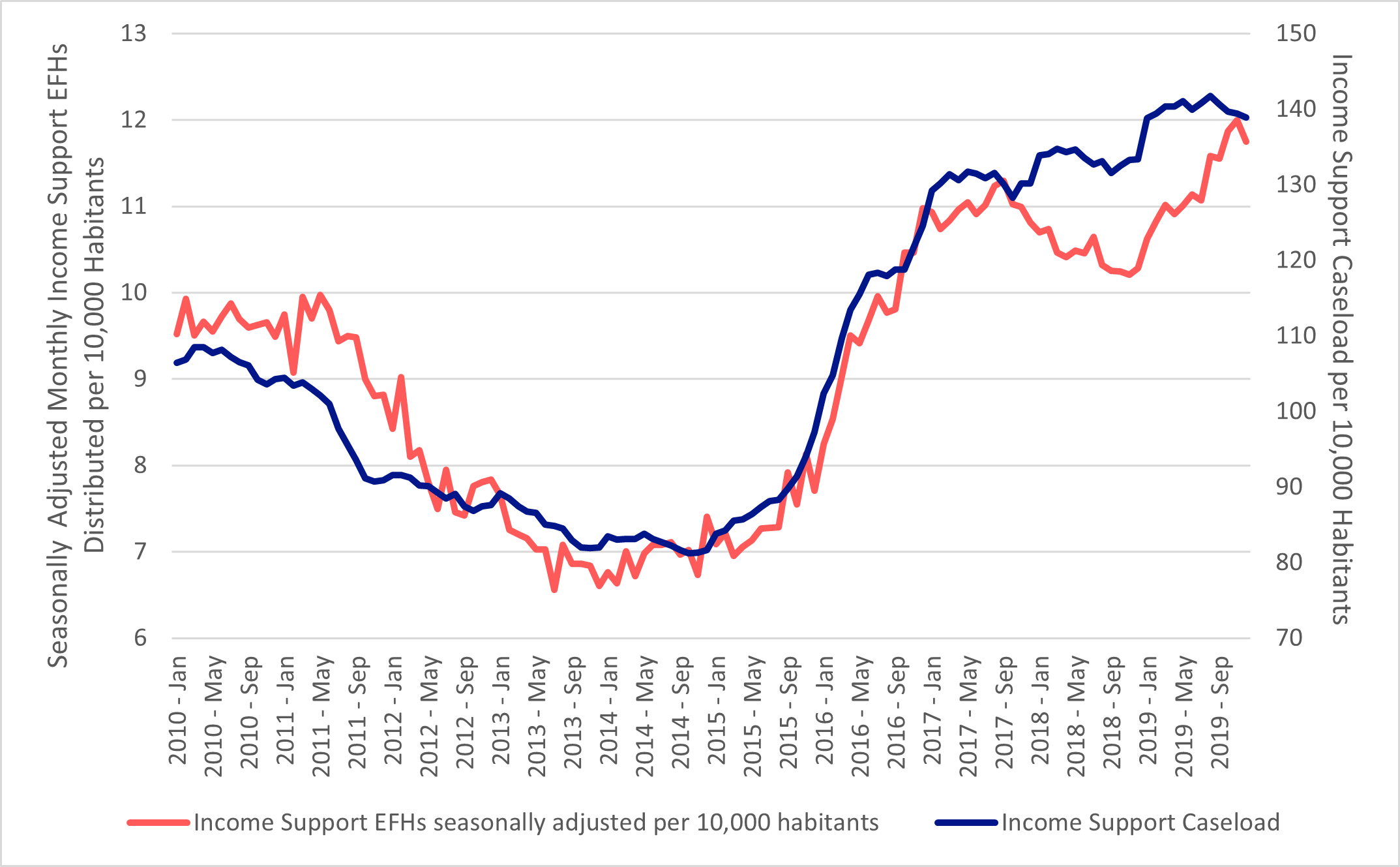
Image: Relationship between hampers distributed and amount of people receiving income support.
There was no strong positive or negative correlation between Calgary Food Bank hampers distributed and the dollar amount of benefits people received from Income Support or AISH. However, there was a strong positive correlation between the number of cases for both government assistance programs and Calgary Food Bank hamper usage. This association suggests that as more Calgarians rely on Income Support and AISH as their primary source of income, we see a correlated increase in the number of hampers we distributed at the Calgary Food Bank. The strength of the positive correlation becomes even stronger for both Income Support and AISH when the number of cases are compared specifically to the hamper demand from clients who indicate the respective program as their primary source of income.
The lack of correlation when looking at the dollar amount provided by Income Support and AISH together with the strong correlation of Calgary Food Bank usage for the number of people on either program, it can be inferred that the monetary support provided is insufficient to cover the cost of basic needs.
The impact that minimum wage has on hamper demand was unexpected. There was a moderately positive correlation: as minimum wage went up, so did hamper demand. The rationale for this needs to be investigated further. However, for people reporting wage as their primary income source, the client population most likely impacted by changes in minimum wage, there was the expected negative correlation between minimum wage and Calgary Food Bank hamper usage. Essentially, as minimum wage increases, hamper usage by people in the workforce decreases.
The cost of rent had a similar impact on hamper demand. For general Calgary Food Bank usage, we saw hamper demand decrease as the cost of rent rises. This finding is also counterintuitive and requires further investigation. Interestingly, but not surprisingly, hamper usage by people who reported wage as their primary source of income had a positive correlation with the cost of rent: as rent prices increase, so does hamper demand among people in the workforce.

